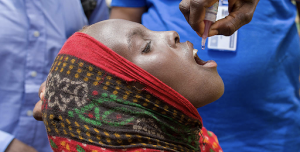Rainy greetings, Friends of TVD,
Rain has never been more welcome. In keeping with the metaphor of rain washing our air and surfaces clean of contaminants, let me share a vaccine success story from my friends at Stanford Global Health. As rain is eliminating smoke and ash, polio vaccine has recently eradicated wild poliovirus from the African continent. This is a BIG deal, and required LOTS of work, along with true global cooperation; wild poliovirus — not to be confused with the exceedingly rare instances of vaccine-derived poliovirus — was once present throughout the world. Today, it is endemic in only two countries, Pakistan and Afghanistan. As my Stanford colleague Michele Barry writes,
“The importance of this milestone cannot be overstated, and the decades of hard work to ensure this outcome have many lessons to impart for our current efforts against COVID-19, the subject of my article this week in Stanford Medicine’s Scope blog.
As we celebrate this step towards health equity, we must not look upon this achievement as the inevitable result of the passage of time. Polio eradication was the product of global interest in and commitment to the wellness of all humans, not just those that reside within our borders.”
Please take the time to read her excellent article here.
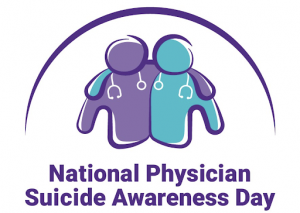
Shine a Light. Speak its name.
September 17, 2020
On a more somber, but also very important note, Thursday, September 17 is National Physician Suicide Awareness Day. Again, my colleagues at Stanford are taking this very seriously, and will be hosting a webinar to raise awareness of the profound stress many of our nations physicians labor under, especially during these COVID days. AWAEM (Academy for Women in Academic Emergency Medicine) and SAEM (Society for Academic Emergency Medicine) have been working together to develop a national panel of experts to discuss this important topic, including our very own Dr. Andra Blomkalns from Emergency Medicine and Dr. José Maldonado from Psychiatry. And please reach out and support your friends and family who work in healthcare.

(Eric Weiss, MD, September 16, 2020)

NOTE: CV🦠News is a labor of love. If you enjoy reading this, please share widely! Was this forwarded to you by a friend? Please subscribe here.
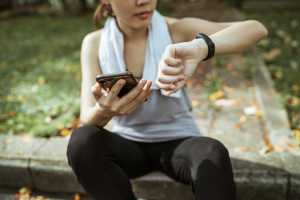
COULD “WEARABLES” DELIVER EARLY WARNING OF COVID INFECTION?
Since the pandemic began, companies that design and sell wearable, like Fitbit, Apple and Garmin (to name a few), have been collaborating and encouraging their customers to participate in research trials to look for patterns that could detect potential illness early on, especially in the presymptomatic yet contagious time period. Researchers use the data from the devices to track vital signs such as heart rate and skin temperature, which are known to elevate when the body is fighting off an infection, and use the data to create algorithms that could help indicate when the immune system is acting up.
In one such study still being conducted at Stanford, the COVID-19 Wearables Study, early results showed that the team was able to detect signs of coronavirus before or at the time of diagnosis in 11 out of 14 patients by looking at changes in their heart rates as documented on their Fitbits. Jennifer Radin, who is leading the DETECT study at Scripps Research says “When your heart beats faster than usual, it can mean that you’re coming down with a cold, flu, coronavirus or other viral infection. Your sleep and daily activities can also provide clues. Being able to detect changes to these measurements early could allow us to improve surveillance, prioritize individuals for testing and help keep workplaces and communities safe.” The DETECT study looks at a large set of anonymized data from thousands of volunteers who are wearing smart watches to study patterns that might reveal the onset of viral infections.
Additionally, there will soon be an updated wearable on the market that will certainly be targeted and used in these studies – Apple announced today that their new Series 6 Apple Watch will include a blood oxygen sensor. This sensor reportedly will be able to give you a current reading within 15 seconds and will also be tracking the levels in the background. Blood oxygen levels, which are typically read by a pulse oximeter at your doctor’s office, are known to decline in many patients with COVID, however not necessarily as an early sign, but rather more likely as the symptoms are becoming more serious. It may be that this functionality becomes more useful in monitoring disease course rather than detecting it, but it will be interesting to see how it adds to the ongoing research.
So far the data has been quite promising, but certainly there is a lot more work to do and less than a quarter of people in the US use wearables, so we can only hope that it becomes a small part of the solution. Additionally, researchers are quick to remind users that wearable technology should not be viewed as a replacement for a call or visit to the doctor. If you have a wearable and are interested in participating to further this body of research, you can login to see if you are eligible for the Stanford COVID-19 Wearables study. Read more here.
(Jackie Phillips, MD, September 14, 2020)
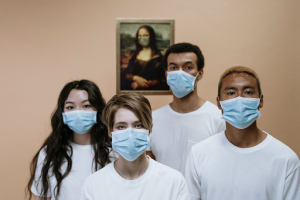
COULD A MASK BE A CRUDE COVID “VACCINE”?
While we await the results of vaccine trials, public health officials are searching for other measures that could decrease the proportion of severe symptomatic SARS-CoV-2 infections. With no clear and easy therapy, one of our main focuses in combating the virus is fewer infections and more immunity. Researchers published a recent article in The New England Journal of Medicine introducing the idea of an age-old concept of variolation, the deliberate exposure to a pathogen to generate a protective immune response. First tried against smallpox, people who were susceptible to smallpox were inoculated with material taken from a vesicle of a person with smallpox, with the intent of causing a mild infection and subsequent immunity. Variolation was practiced only until the introduction of the variola vaccine, which ultimately eradicated smallpox.
One of the researchers in the recent commentary, Dr. Monica Gandhi, an infectious disease physician at the University of California, San Francisco, states “So if you can drive up rates of asymptomatic infection with masks, maybe that becomes a way to variolate the population.” What this means is if the person wearing a mask has a mild illness and is less likely to transmit we are reducing the numbers of severe cases and increasing the number of immune people. While this is still a theory we would need clinical trials that compare the outcomes of people who are masked in the presence of the coronavirus with those who are unmasked — an unethical experimental setup.
In this New York Times article the author writes that the coronavirus variolation theory hinges on two assumptions that are difficult to prove: that lower doses of the virus lead to less severe disease, and that mild or asymptomatic infections can spur long-term protection against subsequent bouts of sickness. Although other pathogens offer some precedent for both concepts, the evidence for the coronavirus remains sparse, in part because scientists have only had the opportunity to study the virus for a few months.
So for now, we don’t have clear evidence to support this theory but it is yet another hope as we look towards previously fought battles such as the smallpox virus to help us fight SARS-COV-2.
(Prerana Sangani, MD, September 15, 2020)
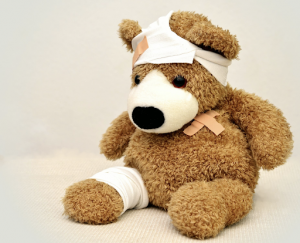
UPDATE: REFINING OUR UNDERSTANDING OF DISEASE OUTCOMES: LESSONS LEARNED FROM THE “LONG-HAULERS”
We are familiar with the stats: 80% of those infected with SARS-CoV-2 will have mild or asymptomatic disease, while 20% will need to be admitted to the hospital for oxygen support, and 5% of those will be admitted to intensive care units for breathing support (sometimes mechanical ventilation).
Most studies to date have appropriately focused on the mortality of COVID-19 (what percentage of those infected die of the disease), but scant few have focused on the longer term outcomes (morbidity) of those who have mild or moderate disease. Because this virus can cause dysregulation of the immune system, sometimes inflammation so severe it is termed a “cytokine storm,” it can affect the functioning of organs all over the body and in the small blood vessels leading to them which can clot and cause damage to the kidney, heart, and nervous system.
While we might expect survivors of severe disease to bear the worst of the long-lasting consequences, it seems COVID-19 can cause persistent symptoms even in those with milder illness. First person accounts are all over Slack and Facebook, many still suffering months after infection. They call themselves “long-haulers.”
One well known and credible long-hauler is Paul Garner, an infectious disease professor at the Liverpool School of Tropical Medicine in the UK, infected in late March. In a blog post published by The British Medical Journal he describes having: “. . . muggy head, upset stomach, tinnitus (ringing in the ears), pins and needles, breathlessness, dizziness and arthritis in the hands.” These symptoms have waxed and waned but not yet resolved. He says this is: “. . . deeply frustrating. A lot of people start doubting themselves . . . Their partners wonder if there is something psychologically wrong with them.”
To date only one peer-reviewed study has looked at the long term symptoms of COVID-19 infection: a single group of 143 survivors from Rome. Most did not require hospitalization and all were assessed 60 days after infection. 44% of them reported a worsened quality of life, including persistent fatigue (53%), breathlessness (43%), joint pain (27%), and chest pain (22%).
A more recent paper (which has not yet been peer reviewed) was uploaded to medRxiv in August. Researchers from the Academic Respiratory Unit of the North Bristol NHS Trust in the UK followed 110 COVID-19 patients whose illnesses required hospitalization for a median of five days between March 30th and June 3rd. Twelve weeks after patients were well enough to leave the hospital, 74% of them reported persistent symptoms including fatigue and breathlessness, despite the overwhelming majority of them having normal basic blood test results, chest X-rays, and lung function studies.
Our early conception of one “catching COVID” and being sick for a couple weeks, then clearing the virus and being totally fine afterwards may not be true for everyone. While it can seem like this pandemic has been around “forever” at this point, scientific understanding of the breadth and depth of its long term outcomes is still in the early days and we clearly have much more to learn about the disease and its aftermath.
Survivors with persistent symptoms, the “long-haulers,” are clearly not uncommon and we have many lessons to learn. Perhaps the most fundamental one?
Do your best not to get infected with COVID-19 in the first place.
Above all: WEAR A MASK IN PUBLIC AREAS!
Stay home if you are sick, wash your hands, reserve testing to those who might be infected when testing capacity is limited, and be honest with those in your household and social bubble (Quaranteam) about potential exposures.
(Sky Pittson, MD, Updated Sept 16, 2020)
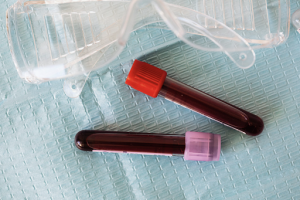
UPDATE: WHERE CAN I GET TESTED LOCALLY FOR COVID-19?
9/14/20 Note: Result turn-around times appear to have decreased considerably across most lab testing sites. Currently Stanford lab and LabCorp Pixel test turn-around are both about 24-48 hours.
** We recommend the options starred below for their combination of relative convenience and reliability. We are actively monitoring testing options for more availability and will be adding to this area as soon as we have reliable information.
**Stanford Express Care — Video appointment prior to drive-through test.
How: Register online through MyHealth if not already a MyHealth patient. To schedule your appointment through MyHealth, go to ‘Appointments,’ ‘Make Appointment’ and select ‘Express Care,’ or download their App for iOS or Android. To schedule over the phone, call (650) 736-5211. Having a primary care physician at Stanford is not required.
Where: Drive-through Testing sites are located in Palo Alto and San Jose and Emeryville. Hours 9AM to 7PM.
Who: Children and adults. Asymptomatic or Symptomatic.
Note: Priority is given to those who are symptomatic or were exposed to confirmed or suspected COVID contacts.
**LabCorp Pixel — An at-home test, self-ordered and self-collected test, this is convenient and a fairly quick turn-around.
How: Order online through the link above, filling out the questionnaire. The kit is mailed FedEx Express (next day), picked up from your home by FedEx Express to send back next-day (not available to send back over the weekend), and results have been taking 36-72 hours after arrival back at their lab. We found the whole process to take only about 15 minutes of total coordination time (ordering, collecting specimen, calling for pick-up).
Where: A self-collected kit at your home
Who: Adults (over age 18), Symptomatic or Asymptomatic but live or work in a high-risk environment (defined as ‘communal,’ meaning you come within 6 feet of multiple people throughout the day).
**The IV Doc — COVID PCR testing in the comfort of your own home. Quick video appointment with MD prior to RN home visit to obtain the PCR test (via AccessMedical).
How: Similar to the IV Doc for IV fluids, one calls to make an appointment, 844-843-4836. Currently appointments are scheduling out by about a day. Same-day appointments may be available for an added fee. Results back in 24 – 48 hours (best if ordered Monday through Thursday, as things are slower over the weekend). The MD calls the patient with results.
Cost: $599.
Where: From the comfort of your own home.
Who: Adults (18 and over).
Project Baseline — Drive-through test (no video visit or doctor’s order required). Working with the county public health system through Google’s company Verily. Drive-through testing options in Redwood City and San Mateo, appointments can be scheduled online 48-72 hours in advance, and results take 3-4 days.
How: Schedule online through the Project Baseline website. Select a nearby location – in our experience San Mateo is often unavailable (they stop at 500 tests/day), but San Jose often is.
Where: Locations throughout CA and several other states.
Who: Adults (age 18 or older). Asymptomatic or Symptomatic.
Santa Clara County Testing — Drive-through test (no video visit or doctor’s order required), but backed up about 2 weeks (as of 8/12/20).
How: Schedule online here.
Where: Multiple sites located in Santa Clara, San Jose, and Morgan Hill.
Who: Children and adults who DO NOT have symptoms of COVID-19 (ASYMPTOMATIC patients only). Residency in Santa Clara County is not required.
Dignity | GoHealth Urgent Care — Video appointment prior to drive-through test. These appointments often book up with no available slots online.
How: Visit their Website to schedule a video visit.
Who: Children and adults, symptomatic and asymptomatic.
Where: Testing sites in Redwood City, San Bruno, the Castro, Mill Valley, Piedmont (Oakland).
Note: GoHealth uses the Abbott point-of-care test which has less sensitivity than the tests listed above. This means higher false negatives. However, results are available within an hour. Priority is given to those who are symptomatic or were exposed to confirmed or suspected COVID contacts.
Color Genomics / SF.Gov — Free testing for those who live or work in San Francisco using Color Genomics. This is part of a COVID response group which offers multiple test sites around the city.
How: Schedule online here.
Where: Multiple sites in SF.
Who: Asymptomatic testing for those who live or work in SF.
PAMF and Kaiser — Established primary care patients at PAMF or Kaiser can be tested at their specific drive-through locations with approval by a visit with their PAMR or Kaiser primary care MD.
If you get tested through any of the above pathways, please be sure to keep your phone handy and answer unknown numbers to avoid delays in processing and getting your results
(Jennifer Abrams, MD, September 14, 2020)
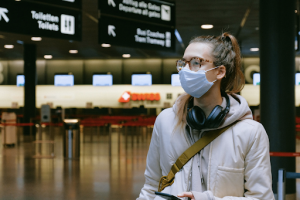
I’M TRAVELING TO A DESTINATION (OR HAVING A MEDICAL PROCEDURE) WHICH REQUIRES A NEGATIVE COVID TEST WITHIN 72 HOURS OF ARRIVAL, WHAT DO I DO?
Whether you have an upcoming procedure or just hope to get away, obtaining a negative COVID-19 test result within 72 hours of the procedure or arrival can be a real challenge, both locally and nationally. While result turn-around times have again improved after the summer’s second surge of infections, we still recommend scheduling your test to be done as close to the 72-hour mark as possible to minimize worry that results won’t be back in time. If you have an upcoming procedure and your provider is able to coordinate COVID-19 testing through that facility, that is best. If your provider is not able to coordinate your COVID-19 testing, please read on.
At this time we recommend Stanford drive-through testing for any 72-hour turn-around requirement. Please see our Where Can I Get Tested Locally for COVID-19 FAQ for more information on how to sign up for a drive-through appointment at Stanford through your MyHealth account (and how to create an account if you don’t yet have one). We recommend logging in to schedule a drive-through appointment at least a week ahead of your desired drive-through appointment time, and to schedule the drive-through appointment for 72 hours prior to your planned procedure or departure time.
Please note, most pre-procedure and travel requirement testing requires the test use “PCR” technology (which Stanford’s does). Many rapid turnaround tests (“same day”) such as the Abbot IDNow test or saliva tests are not as sensitive and may not be sufficient to meet the destination public health requirements.
With so many schools opting for remote learning and so many parents ready to get away, many patients have been asking us what we know about Hawaii’s new negative COVID-19 test requirement as a way to avoid the mandatory 14-day quarantine on entry. While Hawaii’s current plan seems to be to implement this beginning October 1st, this has already been delayed once and plans are not yet finalized for the October 1 timeline either. That said, when it is implemented, we know several of you will be taking advantage of it! You can read more here, and an excerpt here:
Beginning Oct. 1, 2020, at the earliest, trans-Pacific travelers arriving in Hawaii from out-of-state will have the option to get a valid COVID-19 test prior to their arrival, and show proof of a negative test result, to avoid the 14-day quarantine. Evidence of a negative test result must be provided upon arrival in Hawaii. Without this, passengers arriving from out-of-state will be subject to the 14-day quarantine. Travelers will be responsible for the cost of the pre-travel test. No testing will be provided upon arrival at the airport. The Health Department is developing this program, but anticipates requiring an FDA-approved test from a CLIA certified laboratory. The details and requirements are to be determined.
(Jennifer Abrams, MD, September 14, 2020)

If you have made it this far, time for a reward, something to lighten your day, and acknowledge the human spirit. Find some escape, or perhaps even inspiration, in this ever growing collection of works and perspectives gathered from around the world. Please contact me directly if you have come across something that has lifted your heart today. Dr. Eric Weiss
SOMEDAY I’ll tell you some stories about my time with the LSJUMB (aka the Stanford Band). In the meantime, if there was ever a time to watch a video and turn up the volume, it would be now. Even my Cal friends would agree! #gostanford #LSJUMB #oldfartforever.

Again, CV🦠News is a labor of love. If you enjoy reading this, please share widely! Was this forwarded to you by a friend? Please subscribe here.
*****
Yours, in health and resilience,
Eric and the TVD MD team…


